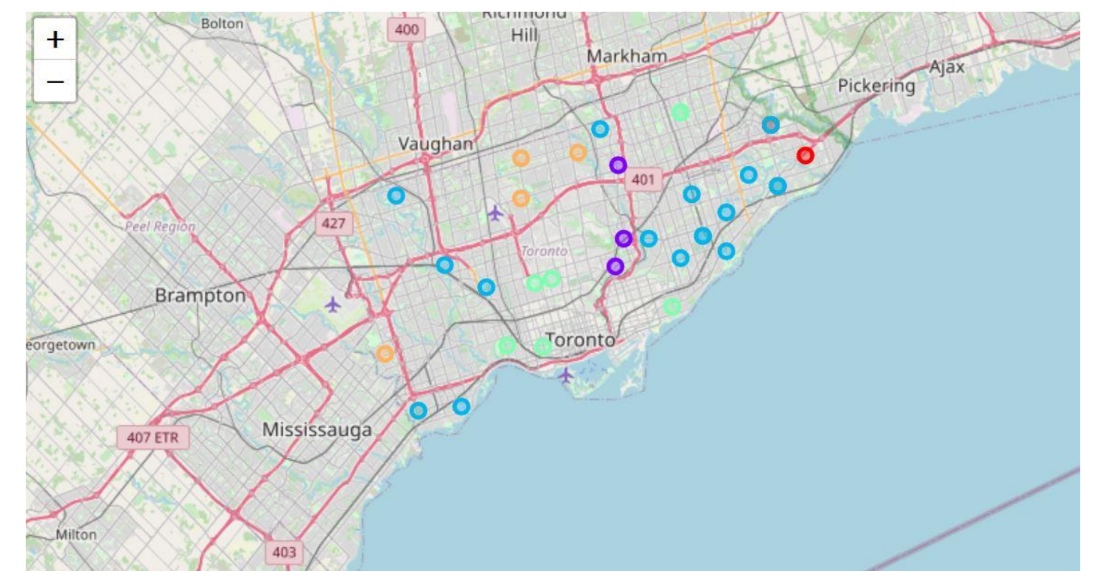STRATEGIC LOCATION FOR CONSTRUCTION OF A NEWCRICKET STADIUM IN TORONTO, CANADA
Scenario:
Cricket is a popular sport especially in Asian Countries like India, Pakistan, Sri-Lanka, Bangladesh, etc. As a result of globalization, many of the cricket fans who migrated to Canada are restricted to watching the sport on TV or to fly thousands of kilometers to stadium. Thus, to get the real feel of the sport fans often desire to watch the game in stadium that is nearby to them. To capitalize on this opportunity and to satisfy the fans of cricket in Canada and to bring back the cricket heritage of the country. The Cricket Board decides to build a stadium in the capital city of Toronto with in-house food and beverage selling which is also a major revenue stream for the board. Now, the location of the stadium within the city matters a lot and influences many things.
Problem Statement:
The Client i.e. the cricket board of Canada wants to find the best location to build the stadium under the following conditions/criteria:
• The Stadium must be close enough to the target audience of cricket fans: To increase attendance and reach
• The land cost should be less: To reduce the fixed cost of the stadium operation
• Location should be surrounded by individuals with high income: Since they are more likely to spend their weekends watching the game in stadium
• To have less food and beverages like coffee, beer venues nearby: Since the in-house food and beverages is a major revenue stream. Having these venues nearby decreases its profitability
Expectation of analysis
A Suitable neighbourhood in the city of Toronto to build a cricket stadium satisfying all the customer criteria.
RESULTS
Summary:
The analysis aims to identify the strategic location for constructing a cricket stadium in Toronto, Canada, considering various criteria such as proximity to the target audience, low land cost, high-income individuals in the area, and limited competition from nearby food and beverage venues.
The findings of the analysis are as follows:
1. Immigration Trends: The number of immigrants from cricket-loving countries like India and Pakistan has been increasing steadily over the years, indicating a growing potential audience for the stadium.
2. Neighbourhood Characteristics: The neighbourhoods in Toronto were analyzed based on social demographic characteristics, including total population, tenant average rent, household income, and the percentage of South Asian population. These factors provide insights into the potential audience size, spending power, and affordability of the area.
3. Venue Data: Foursquare API was used to explore popular venues in and around different neighbourhoods, providing an understanding of the level of competition from existing food and beverage establishments.
4. K-Means Clustering: The neighbourhoods were clustered using the K-Means algorithm to group them based on similarities. The clustering helped in identifying the most suitable neighbourhoods for stadium construction.

Based on the analysis, it was determined that the Rouge and Highland Creek neighbourhoods (Cluster 0) are the most profitable locations for building the cricket stadium. These neighbourhoods have a high South Asian population, fewer popular venues, high after-tax household income, and lower tenant average rent, making them attractive for the target audience and reducing operational costs.
The analysis can be used to make informed decisions regarding the construction of the cricket stadium, considering the profitability and audience potential. It can also be extended to determine strategic locations for other businesses by incorporating relevant data sources.
